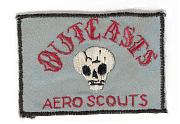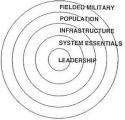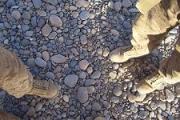Can you really do this without an outside catalyst? What are the different stimuli for change? Seems there is the outside - which for us means civilian something, and an inside which might be a grass roots from the lower ranks.
How are the two different?
Which one is more effective? In terms of it being reinforced or accepted?
Can there be a blend?
I've only read the out takes of some of the JFK speeches on national service, and the thoughts on UW - not enough to gain the context - but I do know it was not real popular with big Army - for that matter I've found allot of evidence in our 20th Century military history where SOF units and attitudes have not been well received (the creation of special units during WWII) - the argument was a diffusion of resources, but I think it may have something to do with military culture as well.
To fast forward to more recent history, many of Donald Rumsfeld's policies were also not popular with the ground services, but his push toward technology and "Transformation" were more in synch with the USAF and USN - and certainly provided the impetus for the MIL Industrial Complex to push the envelope on US Military tech (however - in my opinion it did so at the expense of people by virtue of what it emphasized).
Its hard for me to consider the trends from any other perspective other then applying the context of the ones I've lived through (with my own set of biases) to the ones which preceded them.
My hunch is that meaningful change is an evolution that occurs over decades as its institutionalized and built upon. To speed this change up in a democratic state's military will require a frank and honest discussion between the civilian leadership outlining the requirements for its policy goals over a decade or two, and the military responding with what that is going to cost - and what the risks are. Somewhere, there has to be compromise and consensus. Since it is a democracy, it has to go beyond the executive branch and include the legislative (appropriations and allocations) in a bipartisan fashion. There is significant risk on all sides - and political risk is something that many professional politicians seem to be averse toward.
Best regards, Rob


 . When I read your post, however, I was reminded of Shinseki and berets, which stands as a warning of the dangers and difficulties of trying to introduce new symbols.
. When I read your post, however, I was reminded of Shinseki and berets, which stands as a warning of the dangers and difficulties of trying to introduce new symbols. 




 . Okay, before I start a couple of caveats. First, as you know, I'm a Canadian and have never been in the US military (I know the Canadian military from family tradition) so I just don't know the specifics that would work for the US Army. Second, I can come up with a suggested model for how t build them and how they would work, but I would be relying on others to get the specifics.
. Okay, before I start a couple of caveats. First, as you know, I'm a Canadian and have never been in the US military (I know the Canadian military from family tradition) so I just don't know the specifics that would work for the US Army. Second, I can come up with a suggested model for how t build them and how they would work, but I would be relying on others to get the specifics. . In many ways, military organizations parallel kinship structures. The regimental system is surprisingly similar to tribal societies: roughly BTN=Sept (or Lineage), REG=Tribe, Army=Clan, Service=Confederation, "military"="nation". Within this system, it is simple to produce "meaningful" rituals since the segmentation (sept, tribe, etc) matches he organizational structure and their are obvious connections between structure, history and structural conflict.
. In many ways, military organizations parallel kinship structures. The regimental system is surprisingly similar to tribal societies: roughly BTN=Sept (or Lineage), REG=Tribe, Army=Clan, Service=Confederation, "military"="nation". Within this system, it is simple to produce "meaningful" rituals since the segmentation (sept, tribe, etc) matches he organizational structure and their are obvious connections between structure, history and structural conflict.  ). In this case, we are attempting to "ritualize" personal networks by creating situations where people create non-military networks they can draw on.
). In this case, we are attempting to "ritualize" personal networks by creating situations where people create non-military networks they can draw on.
 ): changing the ‘narrative’ requires in part that both civil and/or military leadership articulate and support ad nausea the required change (and creating new rituals and hero-warrior icons). The second is to effect a change in ‘behaviour’ (which encompasses the junior to field command ranks) which includes revamping training, which teaches the tangibles of ‘what to think’ and what the answers ought to be, and revamping the education system to impart to these more junior officers the intangibles of ‘how to think’ and what the questions ought to be (Marc’s suggestions above re the education system fit very well here). And there should be convergence between education and training. And finally there needs to be a perception that the changes have ‘benefit’, which again where the junior to field command officer are important, for the most important benefit are on performance and success on the battlefield – if they do not see any benefits on the battlefield, the change very likely will fail, whereas if they see benefit they will continue to support and even drive the change.
): changing the ‘narrative’ requires in part that both civil and/or military leadership articulate and support ad nausea the required change (and creating new rituals and hero-warrior icons). The second is to effect a change in ‘behaviour’ (which encompasses the junior to field command ranks) which includes revamping training, which teaches the tangibles of ‘what to think’ and what the answers ought to be, and revamping the education system to impart to these more junior officers the intangibles of ‘how to think’ and what the questions ought to be (Marc’s suggestions above re the education system fit very well here). And there should be convergence between education and training. And finally there needs to be a perception that the changes have ‘benefit’, which again where the junior to field command officer are important, for the most important benefit are on performance and success on the battlefield – if they do not see any benefits on the battlefield, the change very likely will fail, whereas if they see benefit they will continue to support and even drive the change. 


 ). The education and training systems can identify these individuals, and enhance their skills, but it is the promotion system that needs to be fixed for them to succeed.
). The education and training systems can identify these individuals, and enhance their skills, but it is the promotion system that needs to be fixed for them to succeed.



Bookmarks